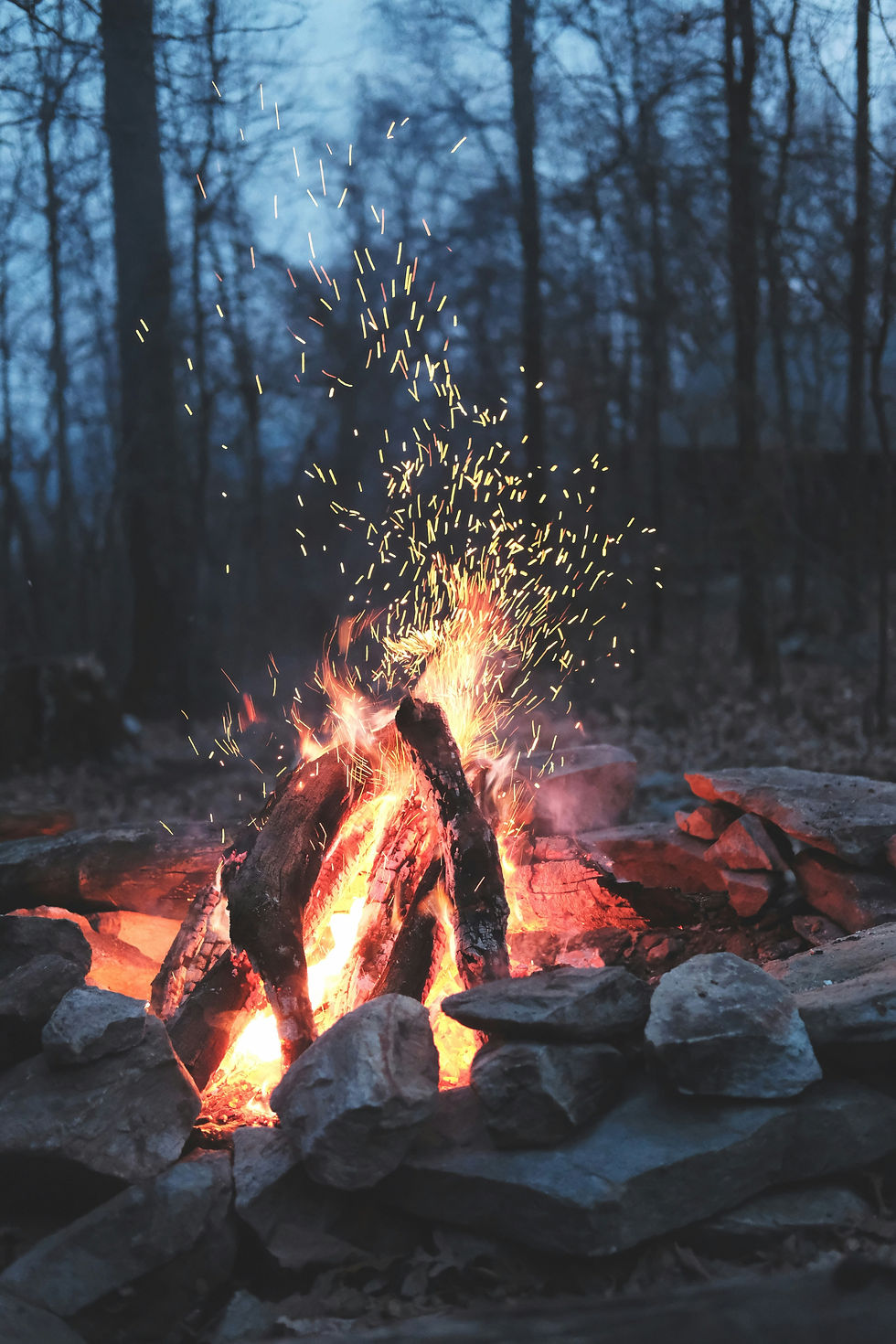The Winter Solstice: Nature's Turning Point
- Janire

- Dec 19, 2024
- 4 min read
As the nights grow longer and the days colder, we approach one of the most significant celestial events of the year: the winter solstice. For adventurers, nature lovers, and those who enjoy tuning into the rhythms of the Earth, this is a moment to pause, reflect, and celebrate. But what exactly is the winter solstice, and why has it been so important throughout history and to the natural world?

What is the Winter Solstice?
The winter solstice marks the shortest day and the longest night of the year. This astronomical phenomenon occurs when the Earth’s axial tilt is farthest away from the Sun in the Northern Hemisphere, resulting in the least amount of daylight. The position of the Sun in the sky changes throughout the year. During the summer months, it rises higher in the sky and remains above the horizon longer. In the winter, the Sun's position is lower, and its time in the sky is shorter. This happens because the Earth orbits at an angle of 23.4 degrees on its axis.
During summer in the Northern Hemisphere, the North Pole is tilted towards the Sun, meaning this part of the Earth receives more direct sunlight and longer daylight hours. In winter, the North Pole is tilted away from the Sun, resulting in fewer daylight hours.
In 2024, the winter solstice will occur on Saturday, December 21st at 9:21 a.m. GMT. The shortest day of the year in 2024 will last 7 hours, 49 minutes, and 42 seconds in London. This makes it 8 hours, 49 minutes shorter than the summer solstice.
Following the solstice, the days will gradually begin to lengthen as the Sun starts its journey back toward the summer solstice. This makes the winter solstice a symbolic turning point, representing renewal, hope, and the promise of longer, sunnier days ahead.
The word 'solstice' comes from the Latin 'solstitium,' meaning "Sun stands still" – because the apparent movement of the Sun's path north or south stops before changing direction.
The winter solstice marks the start of the 'astronomical winter'. However, the start of the 'meteorological winter' is the 1st December. This is because meteorologists (scientists who study weather and climate patterns) divide the year into four seasons, each consisting of three months.
In either case, it might not feel like winter straight away. The coldest temperatures are generally felt some time after the shortest day has passed.
Myths and History of the Winter Solstice
Humans have celebrated the winter solstice for thousands of years, with myths, rituals, and traditions woven deeply into cultures across the globe. Here are a few fascinating examples:
1. Yule (Pagan and Norse Traditions)
The ancient Pagan festival of Yule celebrated the rebirth of the Sun. Communities lit bonfires and candles, symbolising the return of light and warmth. Evergreens, representing eternal life, were brought indoors — a tradition that evolved into modern Christmas trees.
2. Stonehenge and Newgrange
Monuments like Stonehenge in England and Newgrange in Ireland are aligned with the solstice, showcasing humanity’s long-standing fascination with the event. At Newgrange, the rising sun on the solstice illuminates a central chamber, a testament to ancient astronomical knowledge.

3. Roman Saturnalia
The Romans celebrated Saturnalia, a week-long festival honouring Saturn, the god of agriculture. This jubilant period featured feasting, gift-giving, and temporary societal role reversals.
4. Dongzhi Festival (China)
In Chinese culture, the Dongzhi Festival marks the solstice. This celebration emphasises family gatherings and feasting, symbolising harmony and balance as the yin energy (darkness) reaches its peak before yielding to yang (light).
The Importance of the Winter Solstice in Nature
In the natural world, the solstice is a time of rest and preparation. Deciduous trees have shed their leaves, animals hibernate, and the Earth seems to pause. Yet beneath this stillness lies quiet activity:
Seeds lie dormant under the soil, readying for spring growth.
Wildlife adapts to survive the harshest months, showcasing resilience and resourcefulness.
Migratory patterns shift, with some species traveling to warmer climates while others adapt to the colder season.
For those of us who cherish the outdoors, the solstice serves as a reminder of nature’s cyclical patterns and the importance of living in harmony with these rhythms.
Why the Winter Solstice Matters to Us
The winter solstice holds deep meaning for humans beyond its astronomical significance. Here’s why it continues to resonate:
1. A Time for Reflection
As the year’s darkest day, the solstice invites us to turn inward. It’s an opportunity to reflect on the past year, acknowledge challenges, and set intentions for the future.
2. Connection with Nature
The solstice reminds us of our connection to the natural world. Observing this event can foster mindfulness and appreciation for the changing seasons.
3. Celebrating Light and Community
The gradual return of sunlight is a metaphor for hope and renewal. Solstice gatherings, whether around a fire, on a snowy hike, or under the stars, bring people together to share warmth and positivity during winter’s chill.
How to Celebrate the Winter Solstice
Whether you’re an adventurer or a homebody, there are many ways to mark the solstice:
Watch the Sunrise or Sunset: Witness the shortest day’s beauty by watching the sun rise or set. Join me on a relaxed and gentle sunrise hike up Stiperstones. To find out more follow the link.
Go for a Winter Walk: Embrace the crisp air and serene landscapes by heading outdoors.
Light Candles or a camp fire: Symbolise the return of light by gathering around a fire.
Meditate or Journal: Reflect on the past year and set intentions for the year ahead.
Celebrate with Loved Ones: Share food, stories, or a quiet evening with those close to you.

Campfire Winter Reflections
The winter solstice is a profound moment in the Earth’s annual cycle, a reminder of nature’s rhythms and our place within them. Whether you honour it through ancient traditions, modern celebrations, or simply by stepping outside to appreciate the crisp winter air, it’s a time to embrace stillness and the promise of brighter days ahead.
How will you celebrate the winter solstice this year? Let us know in the comments or tag us in your solstice adventures!
I hope you have enjoyed learning more about The Winter Solstice: Nature's Turning Point! Join me on a sunrise hike up Stiperstones in the Shropshire Hills to celebrate! Find out more HERE!
Check out my social media for more...





Comments